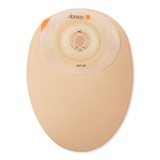Facts About Your Temporary Colostomy
A temporary colostomy can help your bowel rest and recover from a damaging condition. Learn about temporary colostomy surgery, and get some facts about your stoma.

Learn about temporary colostomies.
If you have had or will have temporary colostomy surgery, you may want to know more about it and to get some tips for managing your stoma. Your surgeon or stoma care nurse likely explained to you how long you can expect to have a temporary stoma.
About your temporary colostomy
One common type of temporary colostomy is called a loop colostomy. This temporary colostomy has two distinct openings. One is referred to as the proximal or upstream stoma. Stool will come out of this stoma. The other is the distal or downstream stoma. This non-functioning section of bowel is still connected to your rectum and you may continue to experience defaecation of stool and/or mucous. You may benefit from sitting on the toilet as you would normally encourage evacuation of rectal content.
Hints and tips
After surgery, your stoma may be round or oval in shape. This is completely normal. Your stoma care nurse will support you in selecting the best wafer or flange to help you achieve a good seal, protecting the skin around your stoma.
Some other points to consider:
- Your stoma care nurse will be able to advise you on the appropriate type of stoma pouch for your temporary colostomy
- You may need to change your stoma bag more often, due to mucous from the non-functioning opening breaking down the adhesive quickly
- Do not worry if your stoma bleeds when you wash it. This is normal, because a healthy stoma has a rich blood supply.
Issues you may notice
A sudden enlargement or lengthening of stoma may be indicative of a prolapse. However, a bulge or protrusion of the skin around the stoma may signal the development of peristomal hernia. In either case, you may wish to seek advice from your stoma care nurse.
- 2 Shares
- 9 Recommended





